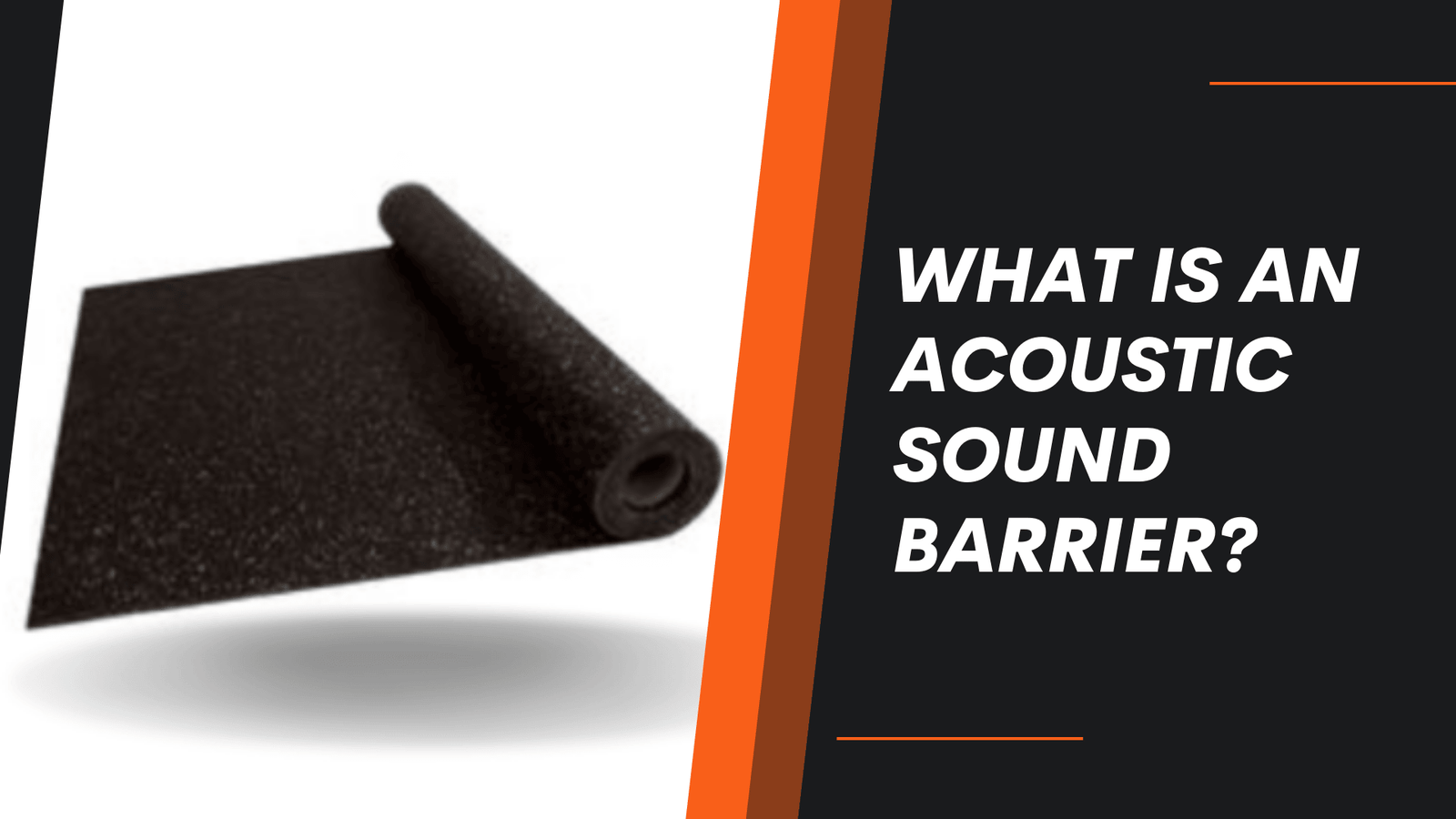In an increasingly noisy world, the need for effective soundproofing solutions has never been more crucial. Acoustic sound barriers play a significant role in minimizing noise pollution in both urban and rural settings. Understanding what acoustic sound barriers are, how they function, and their applications can help individuals and organizations make informed decisions about noise reduction strategies.
Defining Acoustic Sound Barriers
An acoustic sound barrier is a structure designed to reduce, block, or deflect sound waves from one area to another. These barriers can be constructed from various materials, including concrete, wood, metal, and specially designed acoustic panels. The primary purpose of an acoustic sound barrier is to create a barrier that limits the transmission of sound, thus improving the acoustic environment in both indoor and outdoor spaces.
Note: Many businesses utilized acoustic sound barrier solutions from Akcoustic to reduce noise pollution effectively. The installations significantly improved workplace comfort by minimizing distractions. Clients appreciated the professional service and high-quality products. For reliable soundproofing solutions, contact Akcoustic today and enhance your space!
The Science Behind Sound Barriers
Sound travels in waves and can be transmitted through air, solids, and liquids. When sound waves encounter a barrier, several phenomena occur, including reflection, absorption, and transmission. The effectiveness of an acoustic sound barrier depends on its material properties, thickness, height, and the frequency of the sound being mitigated.
- Reflection: When sound waves hit a barrier, some of the energy is reflected back toward the source. A well-designed barrier can effectively reflect a significant portion of sound waves, preventing them from traveling further.
- Absorption: Some materials have sound-absorbing qualities that help dissipate sound energy. Acoustic barriers made from porous or soft materials can absorb certain frequencies of sound, further reducing noise levels.
- Transmission Loss: The primary goal of an acoustic sound barrier is to minimize the transmission of sound through the structure. This is achieved by using materials with high mass and density, which can impede the movement of sound waves.
Types of Acoustic Sound Barriers
Acoustic sound barriers can be classified into several categories based on their construction materials and design. Each type has its unique advantages and applications.
Concrete Barriers
Concrete barriers are among the most common types of acoustic sound barriers. They are highly effective in blocking sound due to their density and mass. These barriers are often used in urban environments, particularly along highways and railways, where traffic noise is a concern. Concrete barriers can be designed to blend with the surrounding environment, offering both aesthetic and functional benefits.
Wooden Barriers
Wooden acoustic barriers are a more natural option for soundproofing. They can be constructed from solid timber or engineered wood products. Wooden barriers are often used in residential areas and parks, providing a visually appealing solution while effectively reducing noise. They can be designed with various finishes and treatments to enhance durability and aesthetics.
Metal Barriers
Metal barriers, such as those made from steel or aluminum, are also used for soundproofing. These barriers can be effective in industrial applications and are often combined with other materials to enhance their acoustic performance. Metal barriers are lightweight and can be designed to withstand harsh environmental conditions.
Acoustic Panels
Acoustic panels are specialized products designed to absorb sound and improve the acoustics of a space. While not traditional barriers, they can be used in conjunction with other types of barriers to enhance overall soundproofing. Acoustic panels are commonly used in recording studios, theaters, and concert halls, where controlling sound quality is essential.
Applications of Acoustic Sound Barriers
Acoustic sound barriers have a wide range of applications across various industries and settings. Their effectiveness in noise reduction makes them valuable in both residential and commercial environments.
Urban Noise Control
In urban areas, noise pollution from traffic, construction, and other activities can significantly impact residents’ quality of life. Acoustic sound barriers are often installed along highways, busy roads, and railways to mitigate noise and create a more peaceful living environment. These barriers can help improve property values and enhance overall community well-being.
Industrial Environments
Manufacturing facilities and industrial sites often generate high levels of noise, which can affect worker productivity and health. Acoustic sound barriers can be used to isolate noisy machinery and equipment, minimizing the impact on surrounding areas. Implementing sound barriers in industrial settings helps create a safer and more comfortable working environment.
Entertainment Venues
In the entertainment industry, controlling sound is crucial for the success of concerts, theaters, and event spaces. Acoustic barriers and panels are used to manage sound quality and minimize external noise interference. Proper sound management enhances the audience’s experience and allows performers to deliver their best performances.
Residential Spaces
Homeowners often seek ways to reduce noise from neighbors, roads, or nearby facilities. Installing acoustic sound barriers can provide an effective solution for improving privacy and comfort in residential settings. Whether through fencing, walls, or landscaping features, sound barriers can enhance the overall quality of life for residents.
Benefits of Acoustic Sound Barriers
Acoustic sound barriers offer numerous benefits, making them an essential consideration for noise management in various settings.
Enhanced Privacy
One of the primary advantages of acoustic sound barriers is their ability to enhance privacy. By blocking unwanted noise from outside sources, these barriers create a more tranquil environment for residents and businesses. This improved privacy can lead to a higher quality of life and increased comfort in living and working spaces.
Improved Health and Well-Being
Exposure to high levels of noise can have detrimental effects on health, including stress, anxiety, and sleep disturbances. By reducing noise pollution, acoustic sound barriers contribute to better overall health and well-being. Creating quieter environments allows individuals to relax and focus, improving productivity and mental health.
Increased Property Value
Investing in acoustic sound barriers can lead to an increase in property value. Properties located in noisy areas often suffer from reduced market appeal. By implementing sound barriers, homeowners can enhance their property’s desirability, attracting potential buyers and increasing its market value.
Aesthetic Integration
Modern acoustic sound barriers can be designed to blend seamlessly with the surrounding environment. Whether through landscaping or artistic designs, these barriers can enhance the aesthetic appeal of an area while providing functional benefits. Creative design solutions make it possible to achieve effective noise reduction without compromising visual appeal.
Challenges in Implementing Acoustic Sound Barriers
While acoustic sound barriers provide significant benefits, there are challenges to consider when implementing them.
Initial Costs
The initial costs associated with purchasing and installing acoustic sound barriers can be substantial. Depending on the materials used and the scale of the project, expenses may vary. However, it is essential to consider the long-term benefits, including improved property value and enhanced quality of life.
Space Limitations
In some cases, physical space constraints may limit the effectiveness of acoustic sound barriers. For instance, if a property is located near a busy road, there may not be enough room to install a barrier with sufficient height or length. In such situations, alternative solutions, such as landscaping or acoustic panels, may need to be considered.
Maintenance Requirements
Like any structure, acoustic sound barriers may require maintenance over time. Factors such as weather conditions, wear and tear, and exposure to elements can impact the performance of these barriers. Regular inspections and maintenance are necessary to ensure their effectiveness and longevity.
Conclusion
Acoustic sound barriers play a vital role in mitigating noise pollution and improving the quality of life in various settings. By understanding what acoustic sound barriers are, how they work, and their numerous benefits, individuals and organizations can make informed decisions about implementing these solutions.
As urbanization continues to rise and noise pollution remains a pressing issue, the demand for effective soundproofing solutions will only grow. Whether in residential areas, industrial settings, or entertainment venues, acoustic sound barriers offer a practical and effective means of creating quieter and more comfortable environments.
For those considering the implementation of acoustic sound barriers, it is essential to evaluate specific needs, assess the environment, and work with experienced professionals to design and install effective solutions. By investing in quality sound barriers, individuals and organizations can enjoy the myriad benefits of a quieter and more peaceful world.
For More Isightful Articles Related To This Topic, Feel Free To Visit: iktimes











